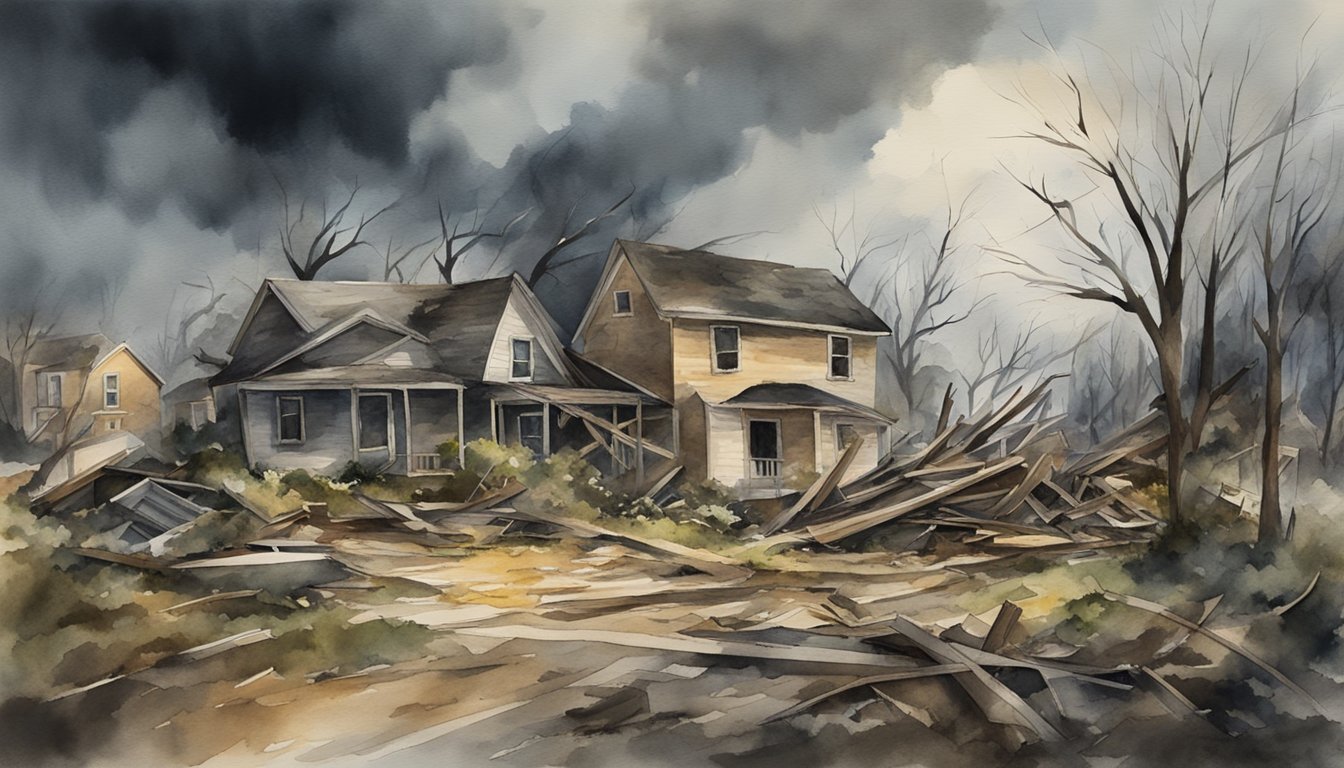Understanding Tornadoes and Their Formation
This section delves into the intricacies of tornadoes, how they take shape, the importance of vigilant weather monitoring, and the advances in technology aiding their detection.
The Science of Tornado Formation
Tornado formation is a complex process typically associated with severe thunderstorms, particularly supercells. These powerful storms contain a persistently rotating updraft called a mesocyclone. For a tornado to develop, specific atmospheric conditions must be present, including variations in wind speed and direction with height, known as wind shear, which contributes to the overall rotation. A lower cloud base then forms a funnel cloud, and when this funnel touches down it becomes a tornado. For a deeper understanding, the NOAA National Severe Storms Laboratory offers a wealth of information on tornado basics.
Recognizing Tornado Warnings and Alerts
The National Weather Service (NWS) plays a crucial role in issuing tornado warnings and alerts. They utilize a combination of radar observations and ground reports to inform the public of potential tornadoes. Understanding these warnings is key to safety during severe weather events. The NWS issues a tornado watch when conditions are favorable for tornadoes, and a warning when a tornado is imminent or observed. Resources such as the Storm Prediction Center provide timely updates.
The Role of Radar and Technology in Detection
Modern radar systems are essential for detecting signs of potential tornado formation such as hook echoes or debris balls within a storm. Advancements in computer models and research initiatives like VORTEX2 have significantly improved the understanding and detection of tornadoes. The National Severe Storms Laboratory (NSSL) continues to enhance predictive capabilities, allowing for more effective warnings and ultimately, greater public safety. For insights into the technology used in tornado detection, visit the NSSL’s website.
Impacts of Tornadoes and Severe Storms

Tornadoes and severe storms can unleash dramatic and sudden impacts, affecting both the natural environment and human activities. Understanding these effects is crucial for preparedness and recovery.
Consequences of Severe Storms and Tornadoes
Severe thunderstorms and tornadoes often bring a combination of high winds and large hail, which can result in significant property damage. Structures may suffer from shattered windows to complete demolition, particularly in regions like Tornado Alley.
Human lives are also at serious risk during these extreme weather events. Tornadoes lead to injuries or deaths due to flying debris and collapsing buildings. Moreover, these storms can provoke power outages, complicating rescue and recovery efforts and posing secondary risks such as lack of heating or cooling.
Emergency Preparedness and Response
In anticipation of severe storms, organizations like the National Weather Service issue tornado watches or warnings, and regions such as Dallas, Omaha, and Kansas City take precise action for public safety. The American Red Cross and first responders gear up to provide immediate assistance, while citizens are urged to create emergency plans and stay informed.
Preparedness strategies include identifying shelter locations and maintaining emergency supplies. Authorities may declare a tornado emergency when a confirmed tornado poses a significant threat to a populated area, emphasizing the urgency for residents to seek safe shelter.
Historical Tornado Events and Research Findings
Research into past events, such as the impactful tornadoes that strike the Gulf of Mexico coastline or Eastern Kansas, provides valuable insights. Findings reveal patterns in tornado seasons and highlight the importance of advanced warning systems to minimize casualties.
Flash floods and flash flooding are also frequent consequences of tornadoes, with heavy storms contributing to sudden flooding, particularly in low-lying areas. Analysis of storm impacts leads to improvements in building codes and community preparation, helping to reduce future catastrophic damage.

